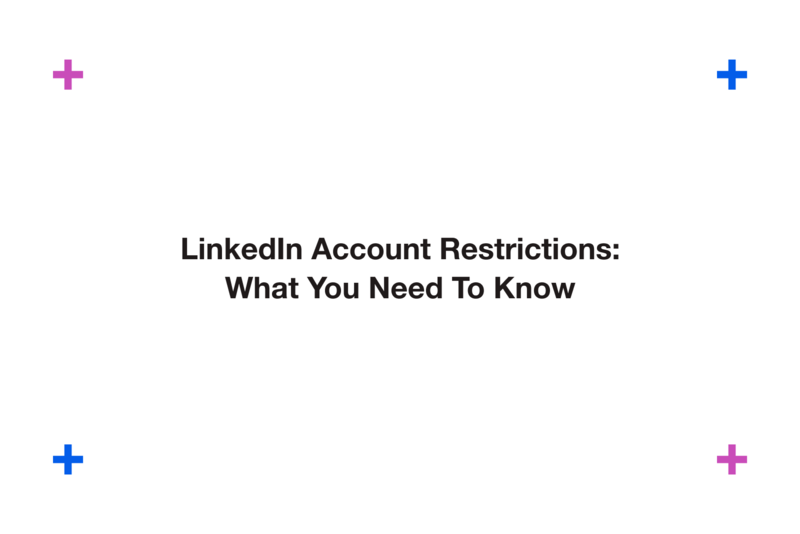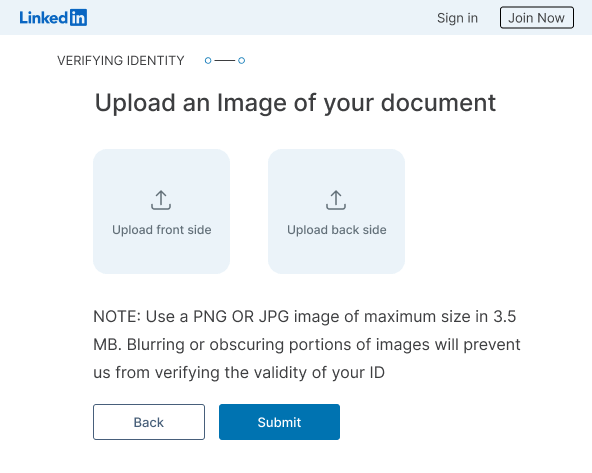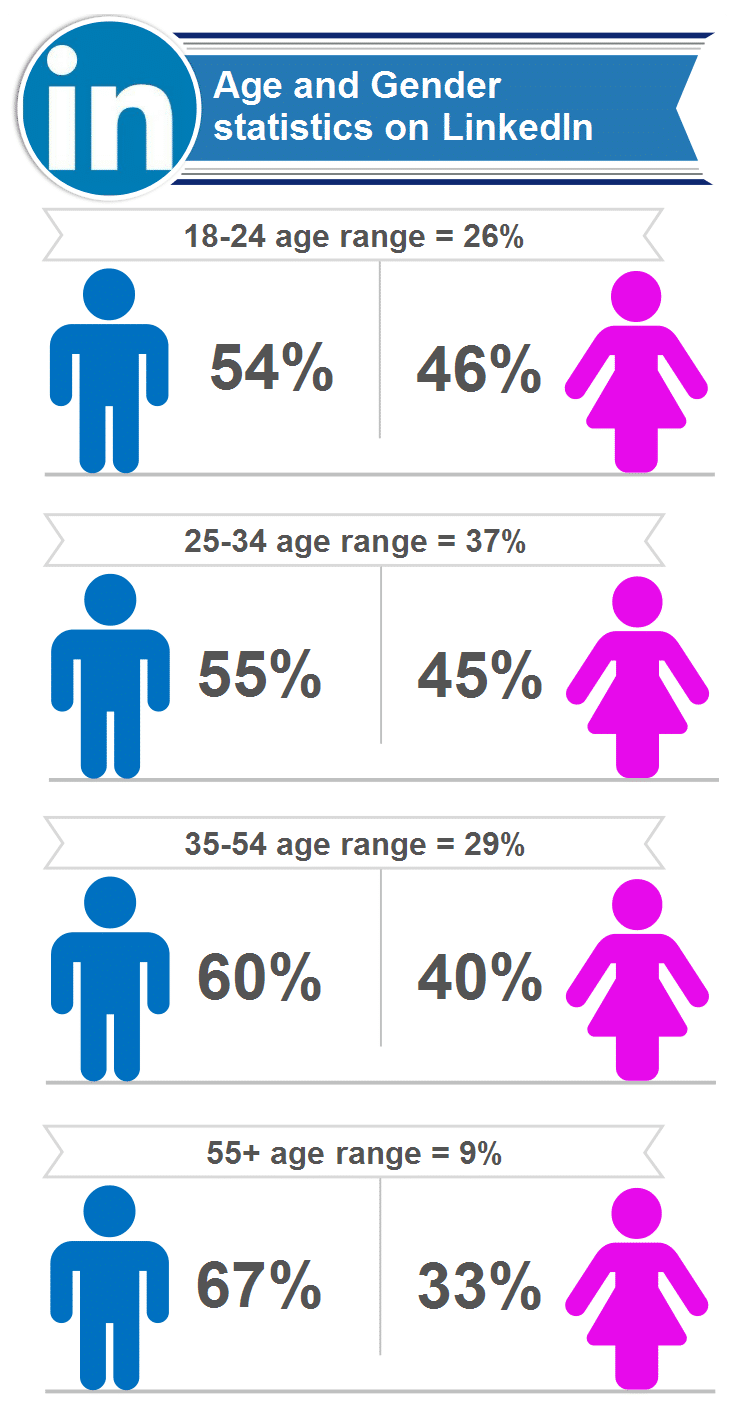LinkedIn has become the go-to platform for professionals looking to connect, share, and grow in their careers. With over 900 million users, it’s a powerful tool for networking, showcasing your skills, and finding job opportunities. Whether you’re a recent graduate, a seasoned professional, or a business owner, having a strong LinkedIn profile can open doors to new possibilities and partnerships. In this blog, we'll explore the community's makeup and explain why understanding age restrictions on this platform matters.
LinkedIn Age Requirements Explained

Before diving into the nuts and bolts of LinkedIn's age requirements, let’s get one thing straight: age restrictions are in place not just as a formality, but to ensure that users are engaging on a platform designed for professional networking. Here's what you need to know:
Minimum Age Requirement:
- Per LinkedIn’s User Agreement, you must be at least 16 years old to create an account.
- For users in certain countries, the minimum age may increase to comply with local laws.
This age restriction is meant to protect minors from exposure to potentially inappropriate content, while also ensuring that users can engage meaningfully in discussions that require a level of professional maturity.
Why the Age Limit?
One key reason LinkedIn has set the minimum age is to cater to its primary audience: professionals and businesses. Users are expected to enter a space where:
- Professional etiquette and standards are paramount.
- Users are often discussing serious topics that require a certain level of understanding and maturity.
- The platform is utilized for job applications and networking opportunities that can impact one’s career.
What if You're Under 16?
If you’re younger than 16 and eager to build your professional identity, there are still avenues available. Consider these alternatives:
- Create a resume: Start crafting a resume and compile your skills and experiences, even if you can’t share them on LinkedIn yet.
- Join professional organizations: Look for youth organizations or summer internships related to your interests.
- Develop your online presence: Use other platforms designed for younger audiences to showcase your skills and interests.
Parental Guidance:
If you're underage, seeking parental guidance is essential. Discuss career aspirations and get insights into how to leverage platforms like LinkedIn effectively once you meet the age requirement.
In conclusion, while LinkedIn is a valuable resource for career-minded individuals, its age restrictions serve a purpose beyond just policy enforcement. They create a safer, more enriching environment for all users, ensuring that age-appropriate interactions take place. Understanding these requirements is crucial for anyone navigating the professional landscape, especially the younger generation preparing to step into the world of work.
Also Read This: How to Delete Education on LinkedIn: Updating Your Profile for Accuracy
3. Why Age Restrictions Are in Place

Age restrictions on platforms like LinkedIn are not just arbitrary rules set by the company; they aim to create a safe and appropriate environment for all users. Here are some of the key reasons why these age limits are vital:
- Legal Compliance: Many countries have laws protecting minors online. The Children’s Online Privacy Protection Act (COPPA) in the United States, for instance, mandates that websites must obtain verifiable consent from parents before collecting personal data from children under the age of 13. LinkedIn enforces age restrictions to comply with such regulations.
- Content Appropriateness: LinkedIn is a professional networking site where users share industry insights and career-related content. Many discussions can be complex and may not resonate with or be appropriate for younger audiences who are still exploring their educational paths.
- Expectations of Users: The platform's user base consists primarily of professionals, recruiters, and businesses. Users expect to connect with individuals who have a certain level of professional experience and maturity. If younger individuals formed a significant part of the platform, it could alter the nature of those professional interactions.
- Safety Concerns: The internet has its risks, and platforms geared toward professionals may expose minors to content and interactions they’re not prepared to handle. By placing age restrictions, LinkedIn aims to protect younger users from potential exploitation or negative experiences.
Overall, age restrictions help maintain LinkedIn's integrity as a professional environment while also safeguarding younger users from potential risks. It's all about ensuring that the platform serves its intended purpose without compromising safety or quality.
Also Read This: Is LinkedIn a Scam? What You Need to Know About Its Legitimacy
4. What to Do If You're Below the Age Requirement

If you're under the age requirement to create a LinkedIn account, don’t worry! There are still plenty of steps you can take to prepare for your future networking endeavors.
- Build Your Skills: Use this time to focus on developing skills that interest you. There are countless online resources, such as Coursera and Udemy, offering courses on a plethora of topics.
- Volunteer or Intern: Gaining real-world experience is invaluable. Look for internships or volunteer opportunities in fields you’re interested in. This can help you build your resume and gain practical knowledge.
- Engage on Other Platforms: Consider using other social media platforms where age restrictions are less stringent. For instance, platforms like Twitter or Instagram can help you connect with industry professionals and join conversations relevant to your interests.
- Create a Personal Brand: Start a blog or a portfolio website where you can showcase your work, thoughts, and experiences. This can be shared once you're old enough for LinkedIn and can serve as a great conversation starter.
- Prepare for the Future: While you're waiting to join LinkedIn, think about what you'd like your profile to look like. Draft a summary of your goals, skills, and interests so you can hit the ground running when you’re eligible.
Remember, age is just a number! There’s so much you can do to enhance your professional profile and prepare for when you can officially join LinkedIn. Keep learning and connecting, and the time will come when you can dive into the LinkedIn community with confidence.
Also Read This: What Does the Term 'Follower' Mean on LinkedIn? Understanding Your Audience
5. Alternatives for Young Professionals
If you're under the minimum age requirement for LinkedIn, don’t worry! There are plenty of alternatives to help you build your professional presence and connect with others in your field. Here are a few platforms and strategies you might consider:
- Internships and Apprenticeships: While you may not be able to join LinkedIn just yet, gaining hands-on experience through internships can be incredibly valuable. Look for local businesses or non-profits that offer opportunities for young professionals.
- Industry-Specific Forums: Many industries have their own forums or communities online. These can be a great way to connect with professionals and learn more about your field.
- Social Media Platforms: Use platforms like Twitter or Facebook to showcase your skills, post about industry news, or connect with mentors. Many professionals are open to networking outside of LinkedIn.
- Local Networking Events: Attend networking events, seminars, and workshops in your area. These provide fantastic opportunities to meet professionals face-to-face and can sometimes lead to job offers.
- Personal Blogging: Consider starting a blog related to your professional interests. Share your thoughts, experiences, and insights in your field. This not only helps you develop your writing skills but can also be a great way to get noticed by industry leaders.
While LinkedIn is a powerful tool for networking, remember that building your professional profile can happen in many ways. By taking these steps, you can still lay a strong foundation for your future professional endeavors without being on LinkedIn just yet.
Also Read This: What Do the Green Dots on LinkedIn Mean? Understanding Activity Indicators
6. Tips for Creating a Strong LinkedIn Profile
Once you reach the appropriate age or if you’re already eligible to create a LinkedIn account, having a strong profile is key to making valuable connections. Here are some tips to ensure your LinkedIn profile stands out:
- Professional Photo: Choose a clear, professional headshot. Aim for a friendly smile and good lighting. Remember, first impressions matter!
- Compelling Headline: Your headline doesn’t just have to be your job title; it can highlight your career aspirations, skills, or what makes you unique. Instead of "Student," consider "Aspiring Marketing Strategist | Digital Enthusiast | Creative Problem Solver."
- Detailed Summary: Use this section to tell your story. Share your background, key skills, and what you're passionate about within your field. Try to keep it conversational and engaging!
- Showcase Your Experience: Carefully list your work experience. Include not just job titles and companies but also a few bullet points that showcase your achievements and skills for each role.
- Skills and Endorsements: List relevant skills that employers seek and regularly update this section. Ask connections to endorse your skills, as this enhances credibility.
- Engage with Content: Don't just create a profile—use the platform! Share articles, comment on posts, and publish your insights. Engagement helps boost your visibility.
- Network, Network, Network: There’s no point in having a fantastic profile if you don’t connect with others. Send connection requests to classmates, professors, and professionals you meet in various settings.
By following these tips, you can craft a LinkedIn profile that leaves a lasting impression and opens doors to exciting career opportunities. Remember, your profile is your online business card—make it shine!
Conclusion and Final Thoughts
In summary, understanding the age restrictions for creating a LinkedIn account is crucial for both users and guardians. LinkedIn, like many social platforms, has set certain age limitations to ensure appropriate engagement and maintain a professional environment. Here are some key takeaways:
- Minimum Age Requirement: Users must be at least 16 years old to create an account, aligning with both legal standards and community guidelines.
- Regional Variations: Depending on your location, additional local laws may influence the age at which you can sign up.
- Importance of Compliance: Users under the required age can face account suspension, highlighting the need to adhere to these rules.
- Parental Guidance: For young users, parental involvement is recommended to help navigate professional networking safely.
As businesses increasingly utilize LinkedIn for recruitment and networking, understanding these age restrictions is more critical than ever. Educators and parents should inform young users about the platform's expectations and the significance of maintaining a professional online presence.
Ultimately, while LinkedIn fosters a platform for professional growth and opportunities, adhering to age restrictions is essential for creating a safe and suitable user experience. By understanding these guidelines, individuals can better position themselves for future career endeavors and networking opportunities.
 admin
admin








